An Ancient Art Form Forging its Future
Photos and Text by Anne Petry
Nepali thangka paintings have vivid colors with red, orange, yellow, blue and green dominating, capturing the cosmic world of Buddhist and Hindu Gods and Goddesses plus local religious monuments and landscapes.
Sacred Design
Photos and Text by Anne Petry
Thangka is the Tibetan name for the ancient Nepal art painting. This art originated from manuscript illustrations, first made on palm leaves. The earliest Nepali paintings are found in the eleventh century Ashtasahasrika Prajnaparamita manuscript. Later on, they were made in the form of either wall paintings or cloth paintings (also called paubha in Sanskrit). In ancient times, to better fulfill the great demand, Nepali artists created this type of religious painting on cloth so it could be easily rolled up and carried to remote destinations. Initially the artists creating thangkas were from the Buddhist community called Newar, one of Nepal’s many ethnic groups, and Newari artists were famous all around Asia for the high quality of their craftsmanship.
If today thangkas are usually bought as pure art, they were commonly used in the past as icons to worship in both Nepal and Tibet. In fact, these religious paintings are based on myths and illustrate Hindu and Buddhist Gods and Goddesses that occupy the central position while surrounded by smaller Deities.
Though the art of thangka has evolved through centuries, the technique, style and iconography remain quite conservative. For refined paintings, pigments like plants, minerals and soil are still used in order to achieve bright colors that will last longer. The biggest paintings are created by a whole team, each person being specialized in one particular act: drawing with pencil, adding colors or applying gilding. Creating a thangka can take weeks, sometimes months. To perform such precise work, the artists have to put themselves into a high state of concentration, a form of meditation. Let’s now discover together this ancient and precious art coming from the lofty reaches of the Himalaya.
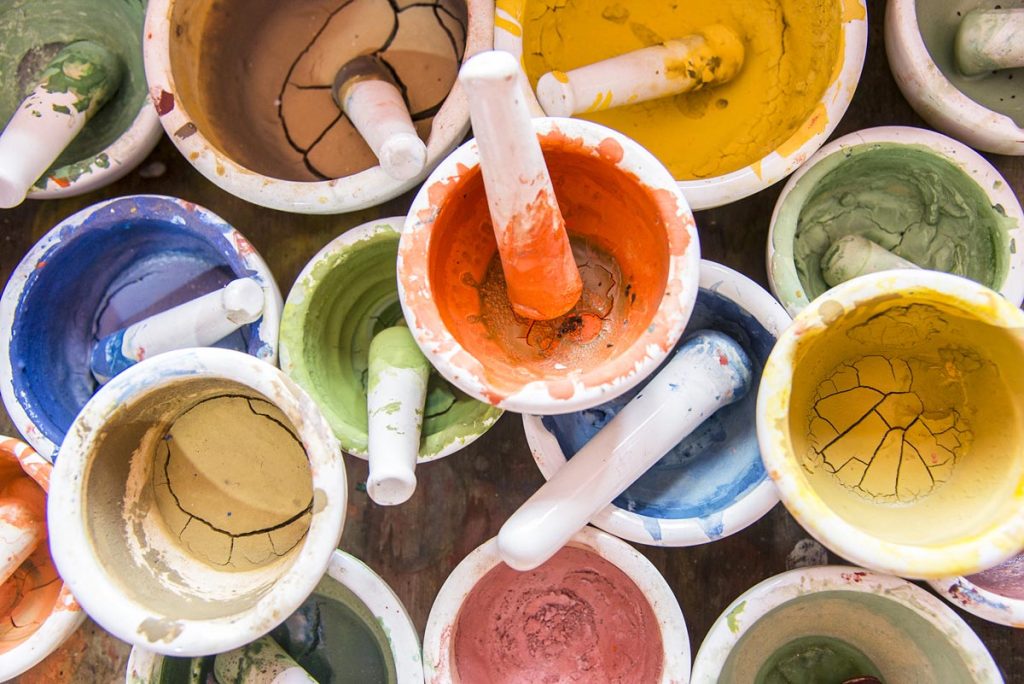
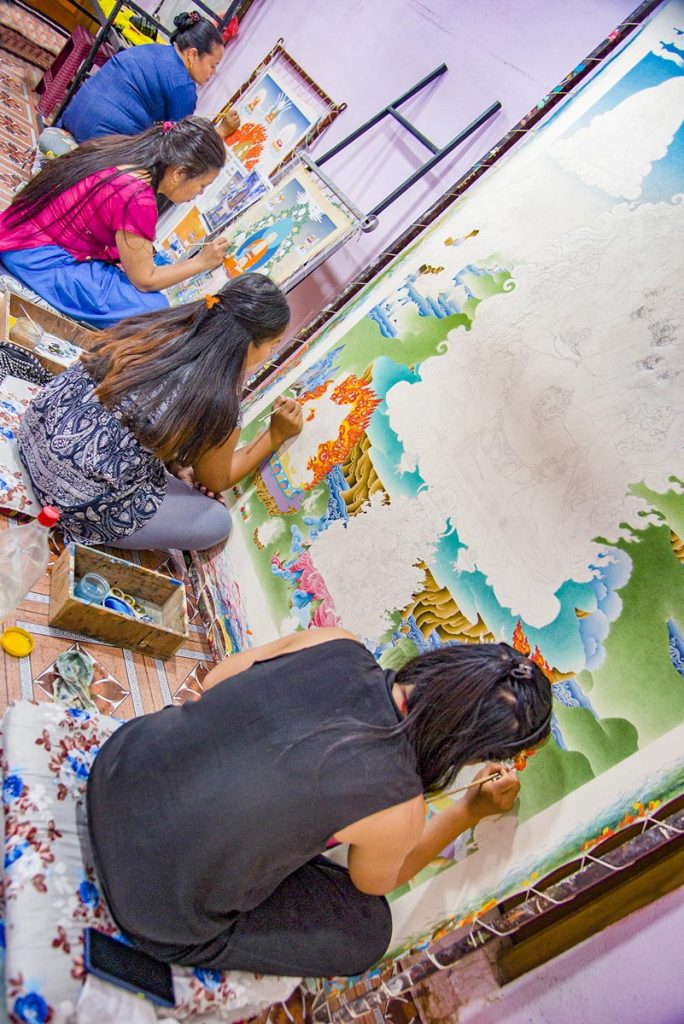
Painters must have precise knowledge of the measurements and proportions of each Deity as established by the Hindu and Buddhist iconography. To achieve a thangka, several artists will work on it, as shown above, each painter being specialized in one task. One will do the design outlines, another one will be in charge of the color gradient, a third one will focus on the details, one will take care of the touch-ups and the last one will do the final touch by adding gold and giving a glittering look to the painting. Such accomplished teamwork gives even more value to the painting.
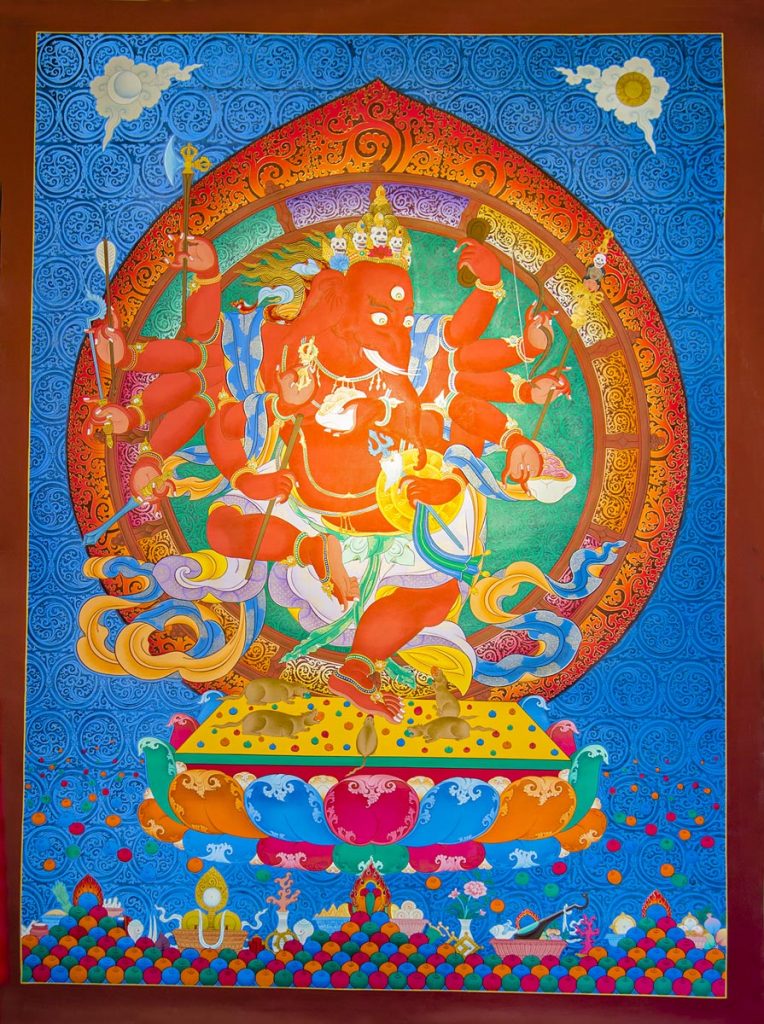


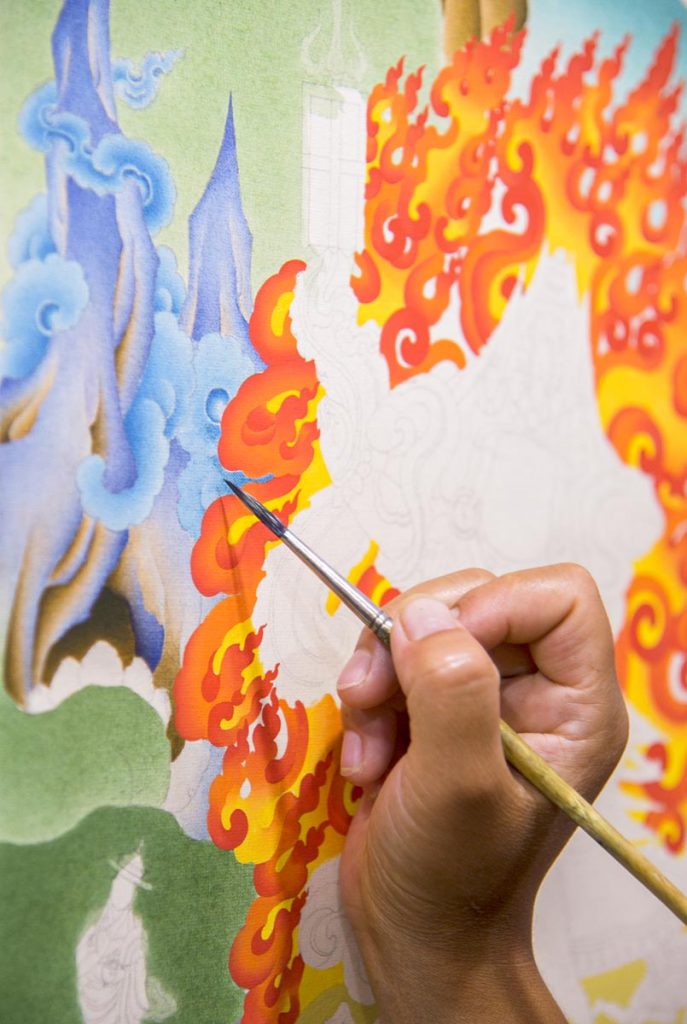



Trishula: The trident, an attribute of Lord Siva, Shakti and Kali, is the most powerful divine weapon. The trident of Siva is called trishula and is considered as a magic protection that drives demons away. The three teeth of the trident are a reminder of creation, preservawtion and dissolution. It may also reflect the three fundamental qualities: goodness, passion and darkness, which are in all things in different proportions. The shaft symbolize the axis of the universe.
Agni: In the Hindu universe, agni, fire, is one of the most ancient and most sacred objects, being a potent vehicle to convey prayers. As such, the God Agni is considered as the mediator between men and Gods, as protector of mankind and their home, and as witness of their actions.

About the Author-
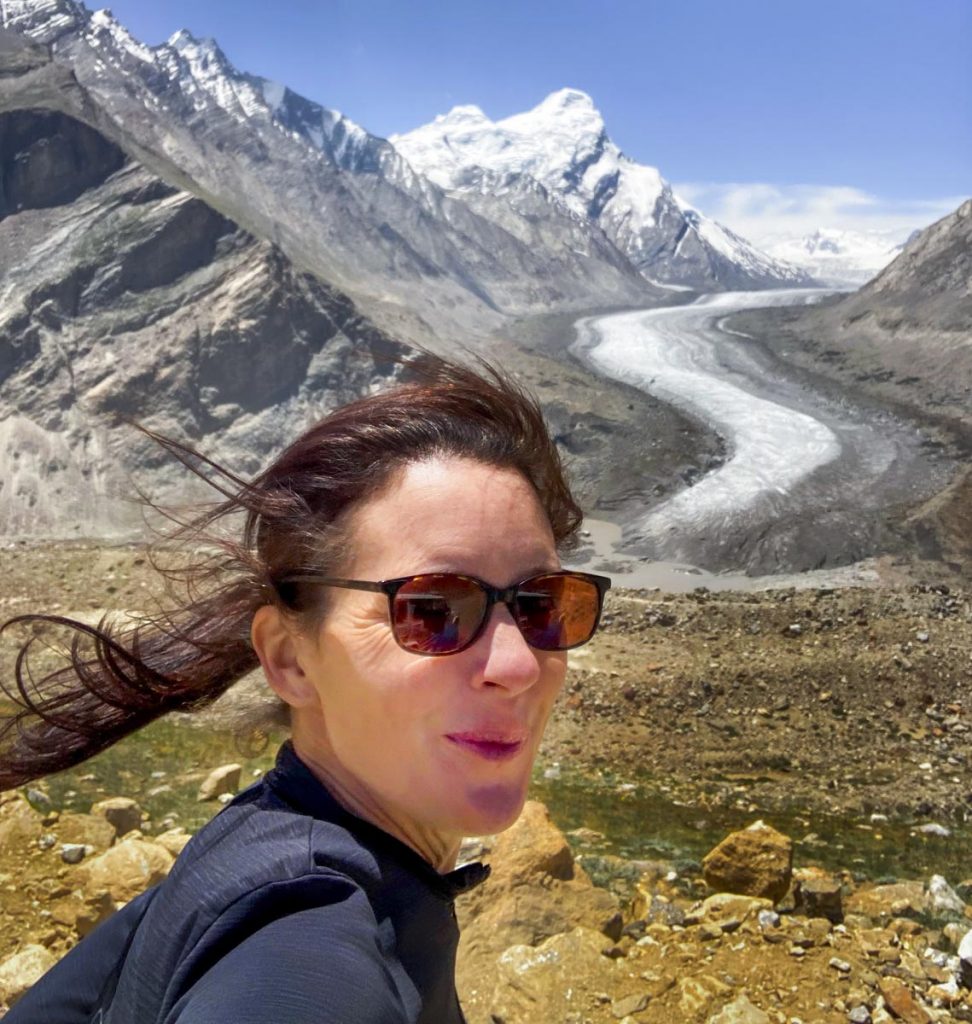
Anne Petry is a French photographer focusing on indigenous populations. Her nomadic life takes her from the Himalaya to the natives in Mexico, from the Shamans in Amazonia to the Hindu priests in India. She is passionate about people who keep alive their beliefs and traditions. Contact Instagram: annepetryphotography
